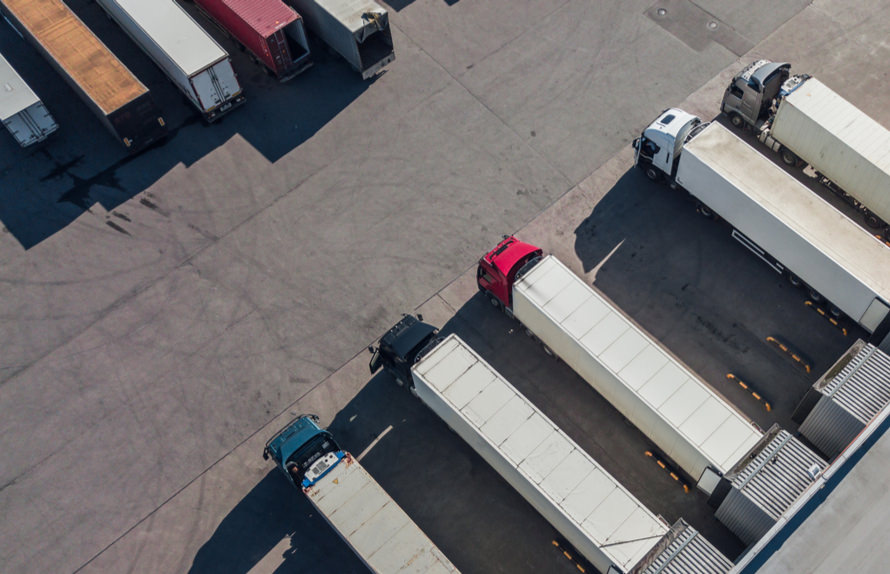
On May 28, 2025, the US Court of International Trade issued a landmark decision declaring former President Donald Trump’s blanket tariffs on imported goods unlawful. While this ruling has far-reaching political and economic implications, its impact on the logistics industry is particularly profound.
For supply chain professionals, freight forwarders, and customs brokers, the court’s decision is more than just a legal matter—it signals a major turning point for global trade logistics in 2025 and beyond.
The Impact of Trump Tariffs on Logistics: A Recap
Trump’s “Liberation Day” tariffs, enacted in April 2025, imposed a 10% duty on virtually all foreign imports. The administration justified these tariffs using the International Emergency Economic Powers Act (IEEPA), citing economic threats as the rationale.
These sudden trade restrictions caused widespread supply chain disruption, forcing logistics companies to:
- Reconfigure global shipping routes
- Adjust customs compliance operations
- Absorb volatile transportation and storage costs
- Deal with overstocking and erratic inventory cycles
Logistics managers across industries described the environment as “chaotic” and “unpredictable,” especially as tariff hikes were announced with minimal notice.
Court Ruling: Unconstitutional Use of Trade Authority
The US Court of International Trade ruled that the tariffs exceeded presidential powers as granted by the IEEPA. The court emphasized that economic deficits do not qualify as “unusual and extraordinary threats” that would justify emergency trade action.
This decision halts both current and proposed tariffs—including:
- A 145% tariff on Chinese goods
- A 50% tariff on European Union imports
- Broader duties on global trade partners
The ruling is a clear message: unilateral trade policy without Congressional backing has limits.
Caveats and Risks: What Roadblocks Could the Tariff Rollback Face
1. Appeal and Legal Uncertainty Remain
The Trump campaign and affiliated trade advisers have already signaled plans to appeal the ruling. This means:
-
The current relief may be temporary, pending the outcome of a higher court decision.
-
Companies may remain hesitant to make long-term supply chain commitments or tech investments.
-
Legal ambiguity could sustain a risk premium in freight pricing or trade contracts.
Implication for logistics: Many providers will likely adopt a cautious stance, keeping contingency plans in place until all legal proceedings are resolved.
2. Tariff Infrastructure and Cost Inertia Persist
Even if the tariffs are officially removed:
-
Importers may not immediately reduce prices, especially if supply contracts were adjusted during the tariff period.
-
Customs systems and broker platforms may still reflect outdated classifications or surcharge coding.
-
Port congestion and warehousing space shortages triggered by past tariffs may take months to resolve.
Implication for logistics: Operational inefficiencies and inflated service costs could linger well after the rollback, slowing full normalization.
3. Shifted Supply Chains Won’t Revert Overnight
Many manufacturers and logistics providers already diversified away from China and high-tariff countries during the trade war. These shifts included:
-
New supplier agreements
-
Factory relocations to Vietnam, Mexico, or Eastern Europe
-
Investments in alternative trade routes
Implication for logistics: Trade routes and supply chain ecosystems reshaped by tariffs may not snap back to 2017 configurations. Some changes may become permanent, requiring logistics providers to maintain multi-regional flexibility.
4. Global Trade Relationships Still Strained
Even though tariffs are rolled back:
-
Trade partners may remain wary of U.S. unpredictability
-
Some countries could retain retaliatory tariffs or redirect trade flows
-
Long-term damage to multilateral trade confidence may be hard to undo
Implication for logistics: Carriers and freight networks may see uneven recovery in volumes, especially on transpacific or transatlantic routes affected by years of uncertainty.
What the Ruling Could Mean for the Logistics Industry in 2025
1. Stabilized Freight Demand and Routing
One of the biggest logistics industry challenges in 2025 has been erratic demand caused by tariff uncertainty. With tariffs ruled illegal, logistics providers can likely expect:
- More consistent shipment volumes
- Reduced last-minute rerouting
- Improved capacity planning for ocean, air, and ground freight
Shippers and 3PLs can plan to make longer-term commitments to trade lanes without fear of sudden cost escalations, assuming these changes stand.
2. Reduced Supply Chain Costs
Tariffs drove up total landed costs across multiple industries, causing strain on logistics budgets. The ruling means:
- Lower customs duties
- Streamlined port operations
- Decreased warehousing expenses due to normalized inventory flow
For small-to-midsize logistics firms, these savings may mean restored margins and increased competitiveness.
3. Improved Port Performance
Major US ports such as Los Angeles, Long Beach, and Savannah suffered from erratic shipping cycles as companies tried to “beat the tariffs.” This resulted in congestion, chassis shortages, and increased dwell times.
With tariff relief, ports can resume predictable operations, leading to:
- Faster container turnaround
- Lower demurrage and detention charges
- Renewed investment in terminal automation and infrastructure
4. Simplified Trade Compliance
Customs brokers and compliance teams were burdened by constant Harmonized Tariff Schedule (HTS) changes and emergency filings. The court’s decision brings relief to trade compliance professionals by:
- Reducing paperwork complexity
- Lowering audit risk
- Enabling smoother clearance procedures at ports of entry
This could accelerate cargo velocity and reduce shipping delays.
Strategic Shifts for Logistics Providers
Return to Just-in-Time Inventory
With tariff-induced risk fading, businesses are likely to shift from “just-in-case” back to just-in-time (JIT) inventory strategies. This means:
- More frequent, smaller shipments
- Decreased reliance on overflow warehouse space
- Increased demand for time-sensitive freight and parcel delivery
Logistics providers should prepare to offer high-velocity distribution solutions.
Increased Investment in Automation and Technology
Uncertainty during the tariff period caused companies to pause tech investments. Now, with a more stable trade climate, the logistics sector can expect renewed focus on:
- Route optimization software
- Warehouse robotics
- Customs documentation automation
- Real-time shipment visibility tools
Technology providers serving the logistics space will likely see rising demand from both enterprise and mid-market players.
Global Supply Chain Rebalancing
With the rollback of tariffs, global trade lanes may return to pre-tariff patterns. This benefits international freight forwarders and consolidators who had lost volume due to diverted trade. Look for:
- Resumption of direct shipping lines from China and Southeast Asia
- Decrease in nearshoring and reshoring pressures
- Expansion of US import hubs regaining international trust
This rebalancing could reinvigorate global logistics networks disrupted since 2018.
Industry Advocacy and Policy Outlook
The logistics industry—through groups like the National Customs Brokers & Forwarders Association of America (NCBFAA) and Council of Supply Chain Management Professionals (CSCMP)—played a role in opposing these tariffs.
Now, advocacy efforts may focus on:
- Promoting transparent, rules-based trade policy
- Encouraging Congressional oversight in future tariff decisions
- Securing investments in national logistics infrastructure
The ruling empowers logistics stakeholders to become more involved in shaping future trade legislation.
Bottom Line: A Reset for Logistics and Supply Chain Operations
The US Court of International Trade’s decision to strike down Trump’s tariffs is more than a legal precedent—it’s a reset button for the logistics industry. By eliminating artificial barriers and restoring trade predictability, the ruling paves the way for:
- Cost optimization
- Strategic reinvestment
- Enhanced trade flow efficiency
As logistics professionals navigate the second half of 2025, this decision offers clarity, relief, and the opportunity to build a more resilient, agile, and technology-forward logistics ecosystem.




